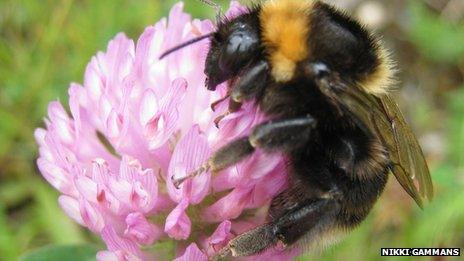Short-haired bumblebee nests in Dungeness
- Published

Further releases are now being planned to help build the population
A species of bee reintroduced to the UK after becoming extinct has nested for the first time in a quarter of a century.
The short-haired bumblebee started dying out in Britain in the 1980s and officially became extinct in 2000.
A reintroduction project saw queen bees brought over from Sweden.
After two releases of queens at the RSPB's Dungeness reserve in Kent, offspring worker bees have been recorded there for the first time.
Short-haired bumblebees were once widespread across the south of England but declined as their wildflower rich grasslands disappeared.
Nikki Gammans, who leads the project, said: "This is a milestone for the project and a real victory for conservation.
"We now have proof that this bumblebee has nested and hatched young and we hope it is on the way to become a self-supporting wild species in the UK.
'Fantastic reward'
"It's been a long journey to get here, from creating the right habitat for them, collecting queens in the Swedish countryside, scanning them for diseases and then eventually releasing them at Dungeness.
"Seeing worker bees for the first time is a fantastic reward for all that hard work but we still have a long way to go to ensure this population is safe and viable."
A first generation of queens, which were released last year, struggled in the summer's cold, wet conditions.
But a second release of queens from Sweden bolstered the colony.
The reintroduction project has involved work with farmers to create flower-rich meadows in Dungeness and Romney Marsh which have also boosted the numbers of other threatened bumblebees.
Further releases are planned to help build the population at Dungeness.
- Published3 June 2013
- Published31 May 2013
- Published28 May 2012
- Published5 May 2012